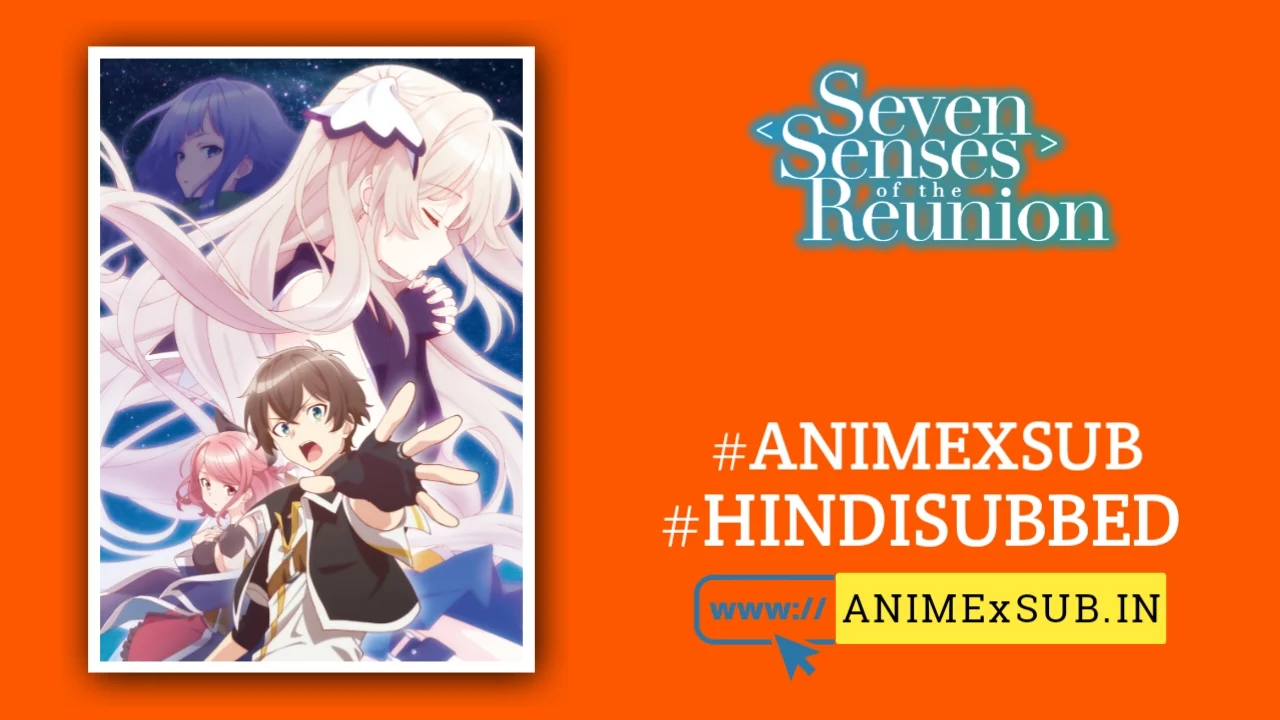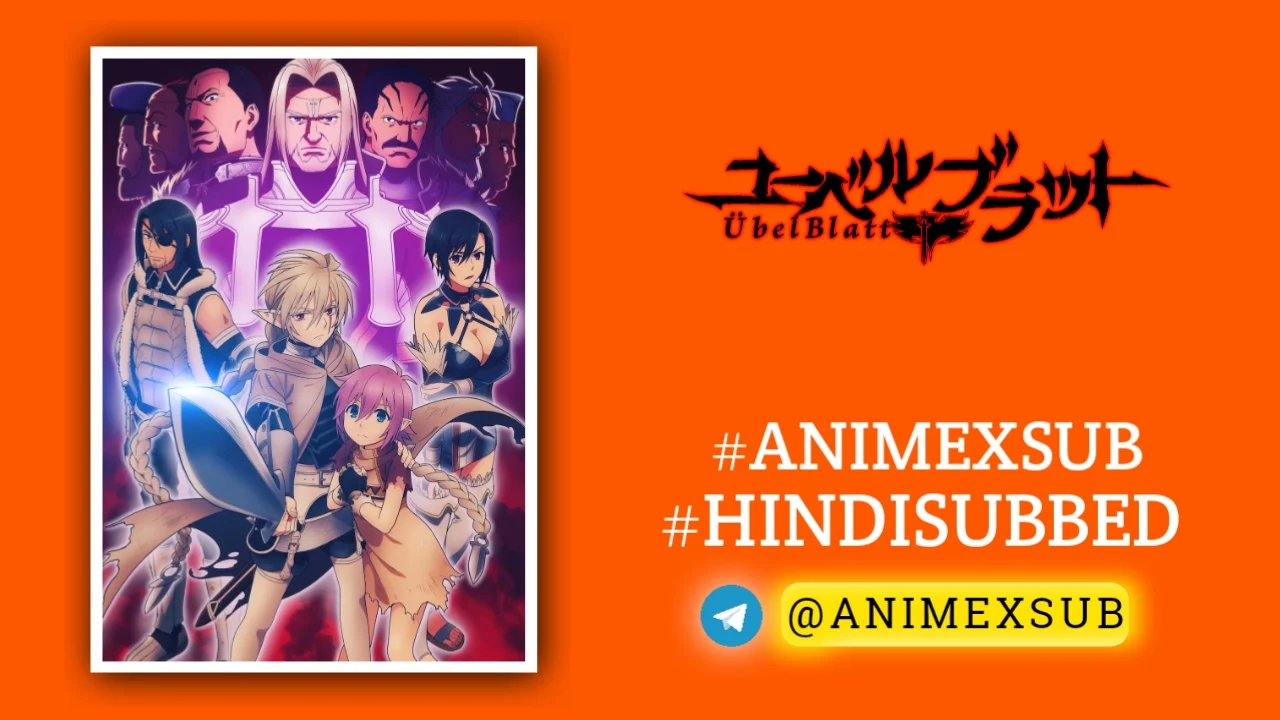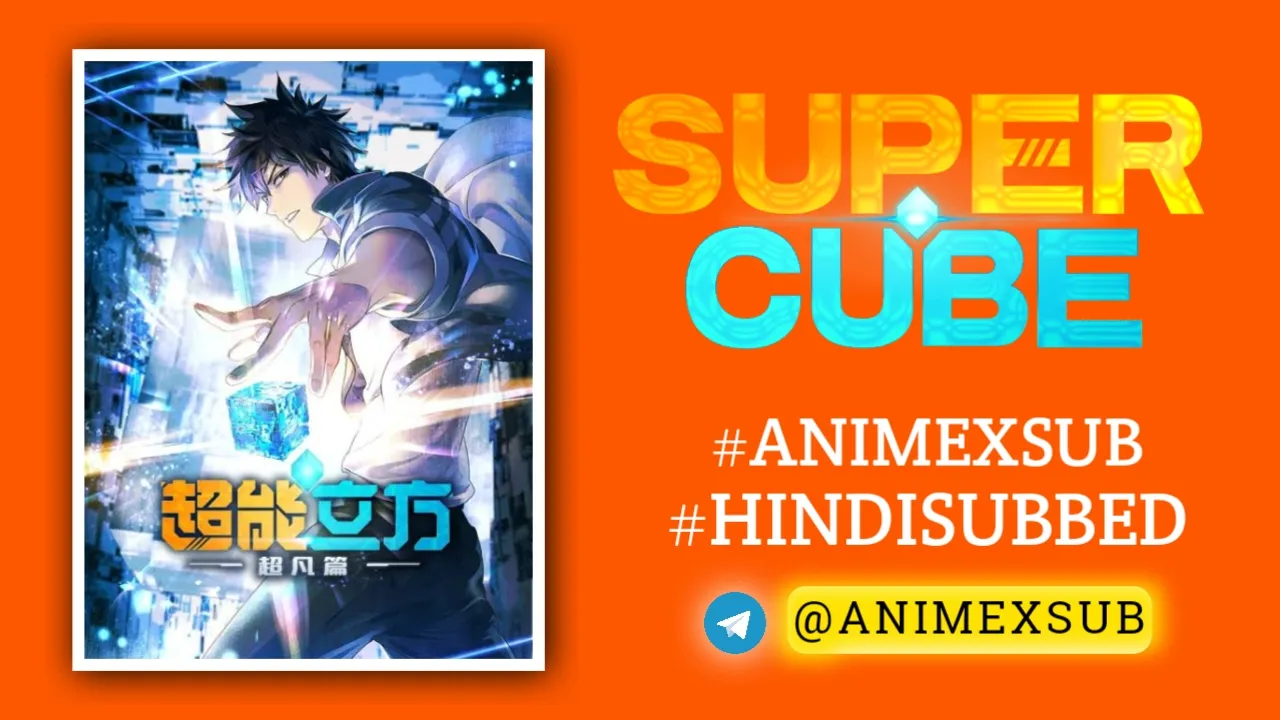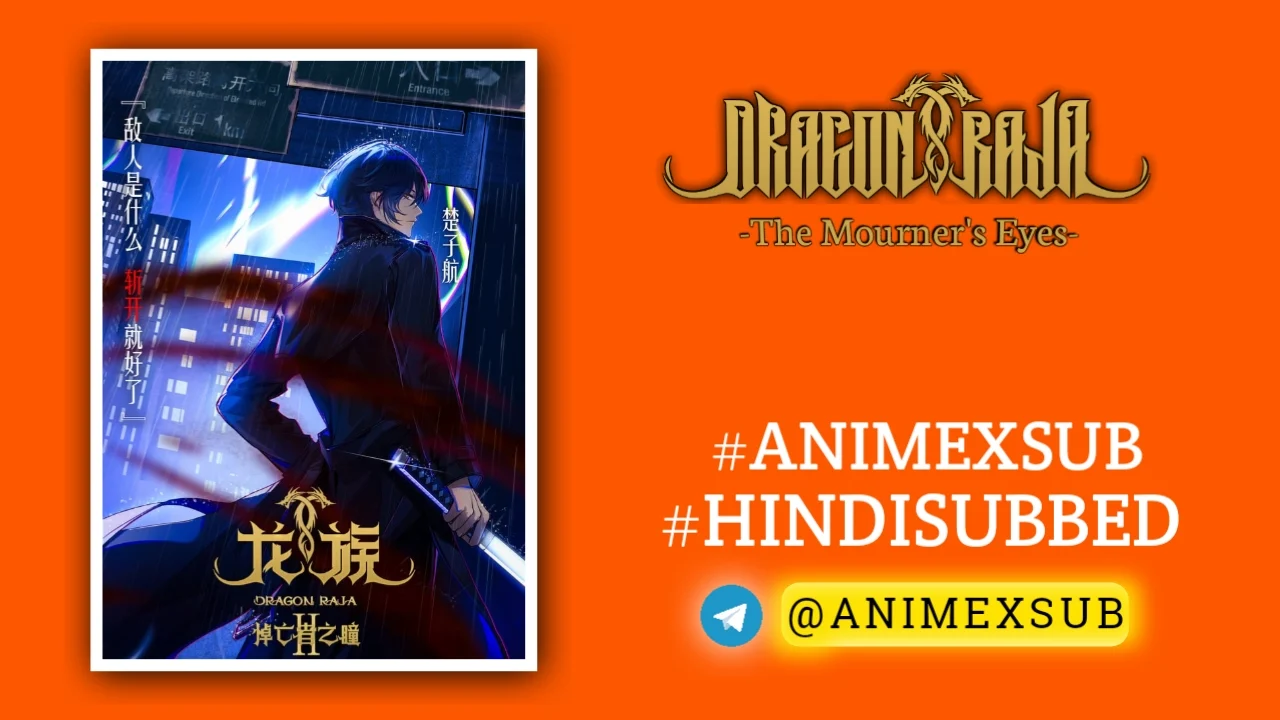
Seven Senses of the Re’Union Hindi Subbed [12/12] | Shichisei no Subaru Hindi Sub

Shichisei no Subaru
Seven Senses of the Re'UnionSynopsis
In the popular MMORPG world 'Union' there existed a legendary party. Its name was Subaru. This party, made up of a group of childhood friends and elementary schoolers, exceeded the limits of the game with their various senses. However, due to an incident which resulted in a death, 'Union' ended its service and the group of childhood friends went separate ways... 6 years later, high schooler Haruto logged into the new 'Reunion' and reunited with a single girl. Asahi—one of old 'Subaru' party members, and his childhood friend who should have died 6 years ago. Is she a digital ghost, or...? (Source: NU)
Watch Trailer
Characters
Episodes
Seven Senses of the Re’Union Season 1: A Deep Dive into a Flawed Yet Fascinating Anime
Seven Senses of the Re’Union (Shichisei no Subaru), a 2018 anime adapted from Noritake Tao’s light novel series, attempts to weave a tapestry of virtual reality MMORPG adventure, psychological drama, and romantic tragedy. Set in a futuristic world where a rebooted game, Re’Union, resurrects old wounds and mysteries, the series follows a group of childhood friends grappling with the apparent return of their deceased friend, Asahi. While it draws heavily from predecessors like Anohana and Sword Art Online, the show carves a niche through its exploration of grief, guilt, and the blurred lines between digital and real worlds. However, its ambition is often undercut by inconsistent execution, leaving it as a polarizing entry in the isekai and drama genres. This review dissects its strengths, weaknesses, and unique elements, offering a fresh perspective on its narrative, characters, and thematic depth.
A Premise Rich with Potential
The story begins in 2034, within the MMORPG Union, where a legendary guild named Subaru—composed of six elementary school friends—dominates through their mastery of the game’s unique “Sense” system. This system grants players special abilities, like Haruto’s aura-manipulating “Fighting Spirit” or Asahi’s prophetic “Prophet Art,” which allows her to glimpse potential futures. Tragedy strikes when Asahi dies in real life after her in-game death, leading to Union’s shutdown and the disbandment of Subaru. Six years later, in 2040, Haruto, now a disillusioned high schooler, logs into the relaunched Re’Union and encounters Asahi’s avatar, seemingly alive with her memories intact. This mystery reunites the scattered Subaru members, who must unravel whether Asahi is a digital ghost, a glitch, or something more sinister, all while navigating their unresolved trauma and fractured relationships.
The premise is a compelling mash-up of Anohana’s emotional weight and .hack//Sign’s virtual reality intrigue, with a dash of Sword Art Online’s high-stakes MMORPG setting. The idea of a deceased friend reappearing in a game taps into universal themes of loss and closure, while the game’s mechanics—where death means permanent account deletion—add tension and stakes. Yet, the show’s attempt to juggle these elements often results in a disjointed narrative that struggles to balance its ambitions.
Characters: Archetypes with Glimmers of Depth
The cast of Seven Senses is both its heart and its Achilles’ heel. Haruto Amō, the guild’s former leader, is a classic brooding protagonist, haunted by Asahi’s death and his perceived failure to protect her. His arc from hollow cynicism to reluctant heroism is predictable but grounded by moments of vulnerability, particularly in his interactions with Asahi. Asahi Kuga, the cheerful rear-guard with prophetic powers, serves as the emotional linchpin, her mysterious return driving the plot. Her ever-present smile masks a tragic undertone, though her character lacks the depth to fully capitalize on this.
Satsuki Usui, a mage with unrequited feelings for Haruto, is the standout, offering raw emotional honesty as she navigates jealousy and loyalty. Her confession in episode 9 is a high point, blending courage and heartbreak in a way that resonates. Takanori Mikado, the sub-leader, is a colder, more calculating figure whose rivalry with Haruto over Asahi adds tension but veers into cliché. Nozomi Kusaka, a shy girl with feelings for Takanori, undergoes a dramatic arc involving betrayal and redemption, but her descent into villainy feels rushed and unearned. Clive Vivali, the foreign member, is underutilized, serving mostly as comic relief.
Critics like Allen Moody have noted the cast’s reliance on “clichéd personalities” and “insufferable jerkishness” (especially Takanori), arguing that only Satsuki elicits genuine sympathy. While the characters draw heavily from Anohana archetypes—down to the love triangles and rivalries—they occasionally shine in quieter moments, like Nozomi’s guilt-driven confrontation with Takanori in episode 11. However, the show’s refusal to fully develop these dynamics leaves the cast feeling like shadows of their inspirations.
Narrative: A Mystery Marred by Pacing
The central mystery—Asahi’s reappearance—hooks viewers early, as does the looming question of Re’Union’s shadowy corporate creators. The show’s strongest episodes focus on the emotional fallout of Asahi’s death and the group’s attempts to reconcile their past. The virtual world allows for creative storytelling, such as when Haruto and Takanori are teleported to a “Monochrome world” to confront their rivalry, or when Asahi’s Prophet Art glitches, hinting at deeper forces at play.
However, the narrative stumbles with its secondary plotlines. A conspiracy involving elite guilds and brainwashing feels tacked on, diluting the focus on the core mystery. Action scenes, like Haruto’s battle against thousands of enemies, are visually underwhelming and fail to match the emotional stakes. The pacing falters in the back half, rushing through Nozomi’s heel turn and leaving major threads—like the game’s real-world implications—unresolved. As one Reddit user lamented, the season ends on a “massive cliffhanger,” with no second season in sight, exacerbating the sense of wasted potential.
Visuals and Sound: A Mixed Bag
Visually, Seven Senses is a paradox. The character designs, crafted by studio Lerche, are distinct and expressive, with Asahi’s ethereal presence and Satsuki’s fiery determination standing out. Dramatic sequences, like the dance in episode 9, are elevated by sharp animation and evocative lighting. Yet, the game world of Re’Union feels bland, with generic dungeons and lackluster CGI monsters that pale compared to Log Horizon’s vibrant settings. The real-world scenes fare better, grounding the story with a muted, melancholic aesthetic.
The soundtrack, featuring Petite Milady’s opening “360° Seiza no Shōjo” and Erii Yamazaki’s ending “Starlight,” captures the show’s blend of nostalgia and mystery. The score itself is serviceable but unmemorable, failing to elevate key moments. Voice acting, particularly Akari Kitō as Satsuki and Nichika Omori as Asahi, adds emotional weight, though some performances (like Takanori’s) feel overly stiff.
Themes: Grief, Guilt, and Digital Ghosts
At its core, Seven Senses explores how technology mediates grief. The game becomes a liminal space where the characters confront their guilt—Haruto’s self-blame, Satsuki’s jealousy, Nozomi’s resentment—while grappling with the possibility that Asahi’s return is a cruel illusion. The show touches on provocative ideas: Can a digital avatar embody a person’s essence? How does trauma linger in virtual spaces? These themes echo Anohana’s focus on mourning but are filtered through a sci-fi lens, making them feel fresh despite the familiar setup.
The show also critiques the commodification of virtual worlds, with Re’Union’s creators offering real-world rewards like scholarships to manipulate players. This angle, while underexplored, hints at a darker commentary on how games exploit emotional investment. Unfortunately, these ideas are often buried under melodramatic love triangles and underdeveloped subplots, preventing the show from reaching the emotional heights of its inspirations.
Reception and Legacy
Critics have been divided. Theron Martin of Anime News Network gave it a C+, praising its attempt to merge Anohana and .hack//Sign but criticizing its unfocused storytelling and weak action. James Beckett found the mystery intriguing but the cast forgettable, calling Re’Union a “poor-man’s SAO”. Anime Gamer Dimension noted its appeal for fans of tragic romance and isekai but lamented its bare-bones character development and lack of closure. On MyAnimeList, it holds a modest 5.65/10, reflecting a mixed fan response.
The show’s similarities to Anohana are both a strength and a weakness. While it captures some of that series’ emotional rawness, it lacks the same narrative cohesion and character depth, making comparisons inevitable and often unflattering. Its isekai elements, meanwhile, feel derivative next to Log Horizon or .hack//Sign, with a game world that never feels alive.
Why It Stands Out
Despite its flaws, Seven Senses offers moments of brilliance. The mystery of Asahi’s return, coupled with the group’s fractured dynamics, creates a compelling emotional core. Satsuki’s arc, in particular, feels like a love letter to anyone who’s struggled with unrequited love and found strength in vulnerability. The show’s willingness to blend genres—isekai, drama, mystery—while tackling heavy themes like grief and digital identity makes it a unique, if imperfect, entry in the 2018 anime landscape.
Final Verdict
Seven Senses of the Re’Union Season 1 is a flawed gem, brimming with potential but hampered by uneven pacing, clichéd characters, and an unresolved ending. It’s a must-watch for fans of Anohana or isekai like .hack//Sign, who can overlook its shortcomings for its emotional highs and intriguing mystery. However, those seeking polished action or a complete story may be left wanting. Watch it for Satsuki’s heart-wrenching confession, the eerie allure of Asahi’s return, and the promise of something deeper that, while not fully realized, lingers long after the credits roll.
Rating: 6.5/10
Best For: Fans of emotional dramas and virtual reality mysteries willing to embrace an incomplete journey.
Watch It On: Amazon Prime, Crunchyroll, or Sentai Filmworks’ Blu-ray collection.





















